Application and Evaluation of the Gaofen-3 Satellite on a Terrain Survey with InSAR Technology
Abstract
1. Introduction
2. Experimental Dataset
3. Interferometric Data Processing
3.1. High-Accuracy InSAR Image Co-Registration
3.2. Interferometry Processing and Interferogram Flattening
3.3. Phase Filtering
3.4. Phase Unwrapping
3.5. Baseline Measurement and Elevation Maps
4. Discussion
4.1. Elevation Accuracy Evaluation with GCPs and 1:2000-Scale DEM Data
4.2. Comparison with Yaogan-29 Satellite
5. Conclusions
Author Contributions
Funding
Acknowledgments
Conflicts of Interest
References
- Madsen, S.; Zebker, H.; Martin, J. Topographic mapping using radar interferometry: Processing techniques. IEEE Trans. Geosci. Remote Sens. 1993, 31, 246–256. [Google Scholar] [CrossRef]
- Zhang, Q. System Design and Key Technologies of the GF-3 Satellite. Acta Geod. Cartogr. Sin. 2017, 46, 269–277. [Google Scholar]
- Zebker, H.; Werner, C.; Rosen, P. Accuracy of topographic maps derived from ERS-1 interferometric radar. IEEE Trans. Geosci. Remote Sens. 1994, 32, 823–836. [Google Scholar] [CrossRef]
- Thompson, D.; Robertson, A.; Arnold, D. Multi-baseline interferometric SAR for iterative height estimation. In Proceedings of the IEEE International Geoscience and Remote Sensing Symposium, Hamburg, Germany, 28 June–2 July 1999; pp. 251–253. [Google Scholar]
- Ferretti, A.; Prati, C.; Rocca, F. Multibaseline InSAR DEM reconstruction: The wavelet approach. IEEE Trans. Geosci. Remote Sens. 2002, 37, 705–715. [Google Scholar] [CrossRef]
- Guarnieri, A. SAR interferometry and statistical topography. IEEE Trans. Geosci. Remote Sens. 2002, 40, 2567–2581. [Google Scholar] [CrossRef]
- Werninghaus, R.; Buckreuss, S. The TerraSAR-X Mission and System Design. IEEE Trans. Geosci. Remote Sens. 2010, 48, 606–614. [Google Scholar] [CrossRef]
- Krieger, G.; Fiedler, H.; Zink, M. The TanDEM-X mission: A satellite formation for high-resolution SAR interferometry. In Proceedings of the 4th European Radar Conference, Munich, Germany, 10–12 October 2007; pp. 83–86. [Google Scholar]
- Bamler, R.; Just, D. phase statistics and decorrelation in SAR interferograms. In Proceedings of the IEEE International Geoscience and Remote Sensing Symposium, Tokyo, Japan, 18–21 August 1993; pp. 980–984. [Google Scholar]
- Covello, F.; Battazza, F.; Coletta, A. COSMO-SkyMed mission status: Three out of four satellites in orbit. In Proceedings of the IEEE Geoscience and Remote Sensing Symposium, Cape Town, South Africa, 12–17 July 2009; pp. 773–776. [Google Scholar]
- Thompson, A.; Luscombe, A.; James, K. RADARSAT-2 Mission Status: Capabilities Demonstrated and Image Quality Achieved. In Proceedings of the European Conference on Synthetic Aperture Radar, Friedrichshafen, Germany, 2–5 June 2008; pp. 1–4. [Google Scholar]
- Igarashi, T. Alos mission requirement and sensor specifications. Adv. Spacd Res. 2001, 28, 127–131. [Google Scholar] [CrossRef]
- Kankaku, Y.; Osawa, Y.; Hatooka, Y. The overview of the L-band SAR onboard ALOS-2. Tech. Rep. IEICE Sane. 2009, 110, 117–120. [Google Scholar]
- Miranda, N.; Rosich, B.; Meadows, P. The EnviSAT ASAR Mission: A Look Back at 10 Years of Operation; ESA Living Planet Symposium: Edinburgh, UK, 2013; p. 41. [Google Scholar]
- Torres, R.; Snoeij, P.; Geudtner, D. GMES Sentinel-1 mission. Remote Sens Environ. 2012, 120, 9–24. [Google Scholar] [CrossRef]
- Deng, M.J.; Zhang, G.; Zhao, R. Improvement of Gaofen-3 Absolute Positioning Accuracy Based on Cross-Calibration. Sensors 2017, 17, 2903. [Google Scholar] [CrossRef] [PubMed]
- Shao, W.; Sheng, Y.; Sun, J. Preliminary Assessment of Wind and Wave Retrieval from Chinese Gaofen-3 SAR Imagery. Sensors 2017, 17, 1705. [Google Scholar] [CrossRef] [PubMed]
- Wang, H.; Wang, J.; Yang, J. Empirical Algorithm for Significant Wave Height Retrieval from Wave Mode Data Provided by the Chinese Satellite Gaofen-3. Remote Sensing 2018, 10, 363. [Google Scholar] [CrossRef]
- An, Q.; Pan, Z.; You, H. Ship Detection in Gaofen-3 SAR Images Based on Sea Clutter Distribution Analysis and Deep Convolutional Neural Network. Sensors 2018, 18, 334. [Google Scholar] [CrossRef] [PubMed]
- Chen, Z.; Zhang, L.; Zhang, G. An Improved InSAR Image Co-Registration Method for Pairs with Relatively Big Distortions or Large Incoherent Areas. Sensors 2016, 16, 1519. [Google Scholar] [CrossRef] [PubMed]
- Goldstein, R.; Werner, C. Radar interferogram filtering for geophysical applications. Geophys. Res. Lett. 1998, 25, 4035–4038. [Google Scholar] [CrossRef]
- Lee, J.; Papathanassiou, K.; Ainsworth, T.; Grunes, M.; Reigber, A. A new technique for noise filtering of SAR interferometric phase images. IEEE Trans. Geosci. Remote Sens. 1998, 36, 1456–1465. [Google Scholar]
- López, C.; Fàbregas, X. Modeling and Reduction of SAR Interferometric Phase Noise in the Wavelet Domain. IEEE Trans. Geosci. Remote Sens. 2002, 40, 2553–2566. [Google Scholar] [CrossRef]
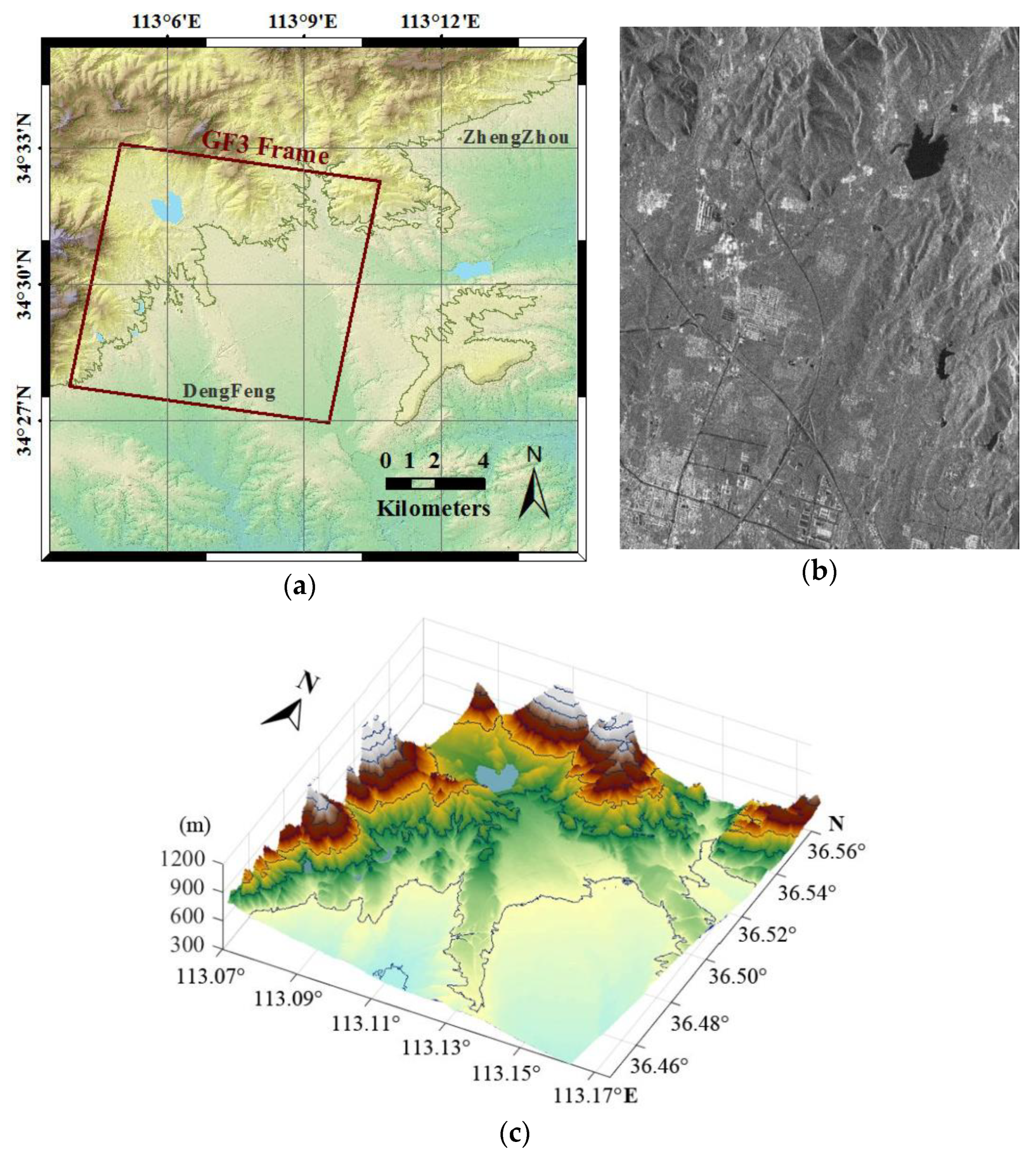
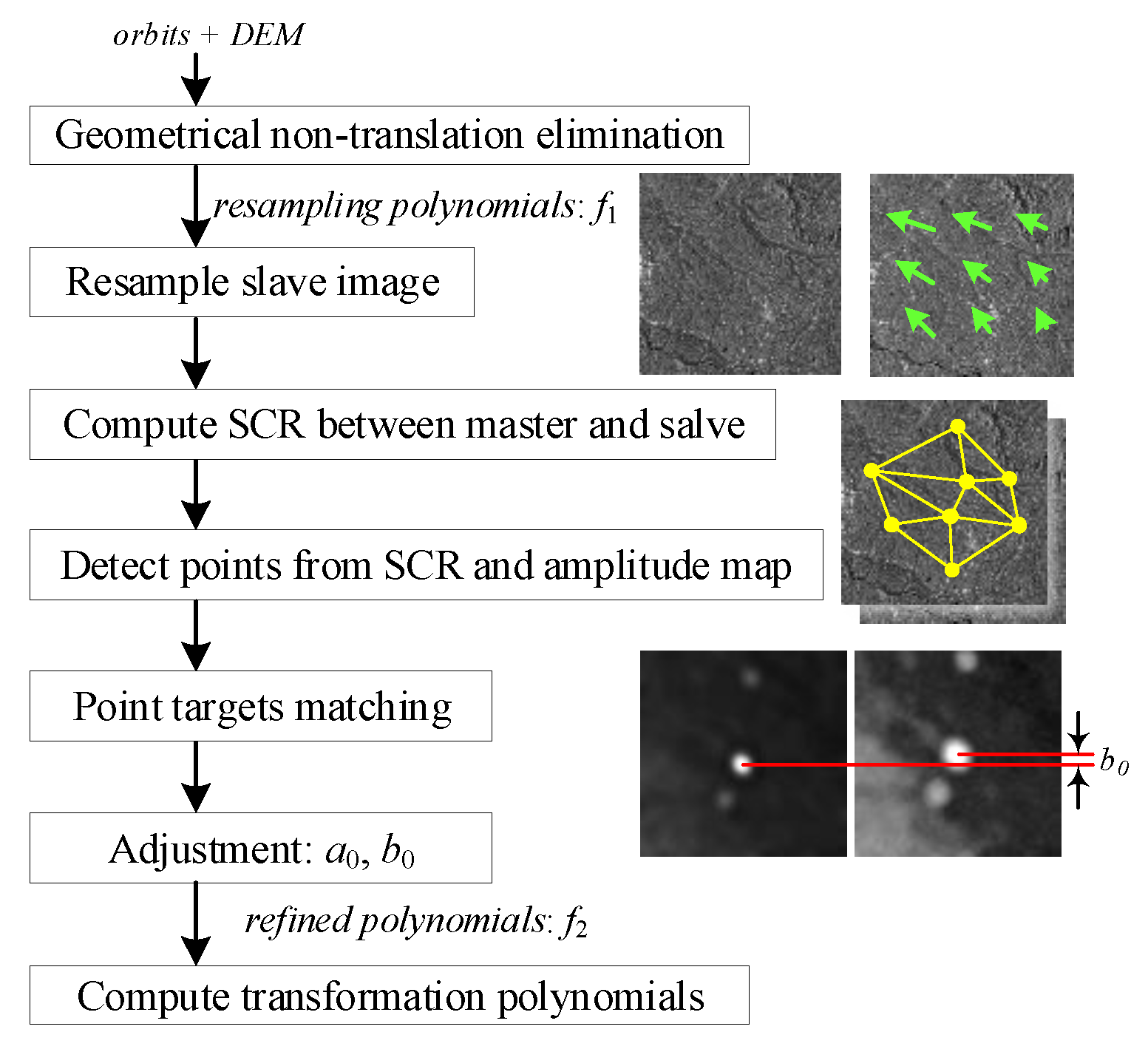

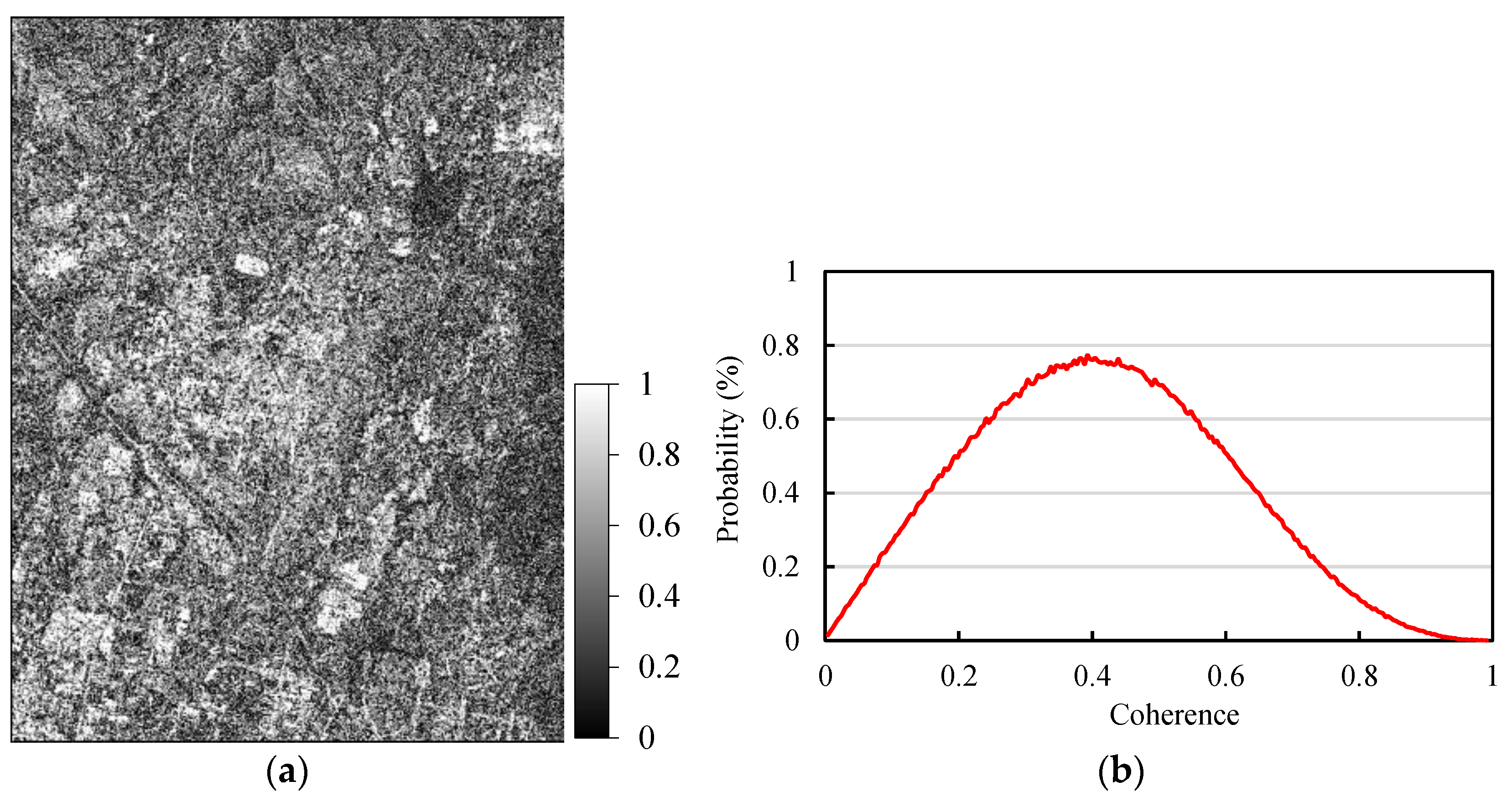
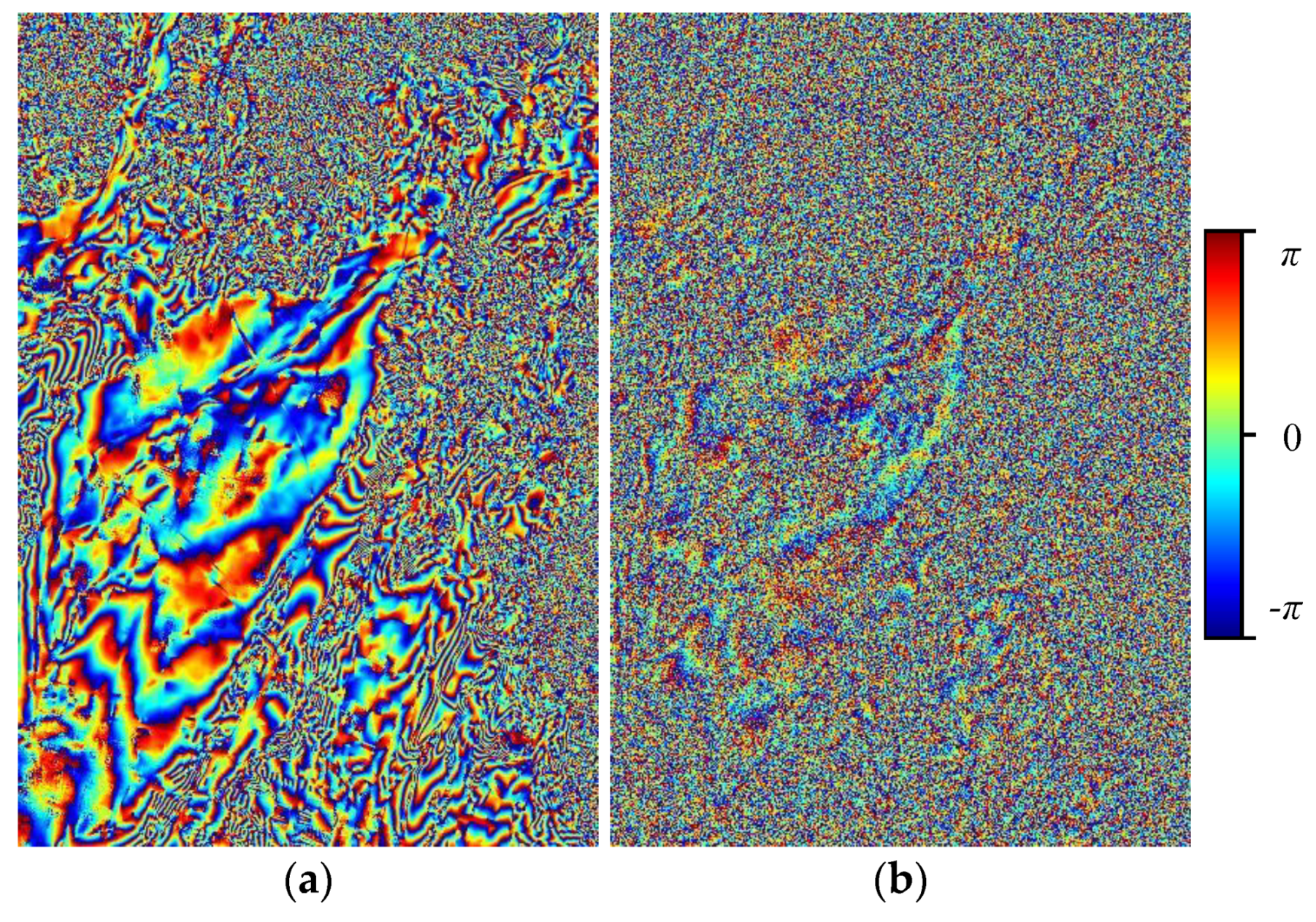

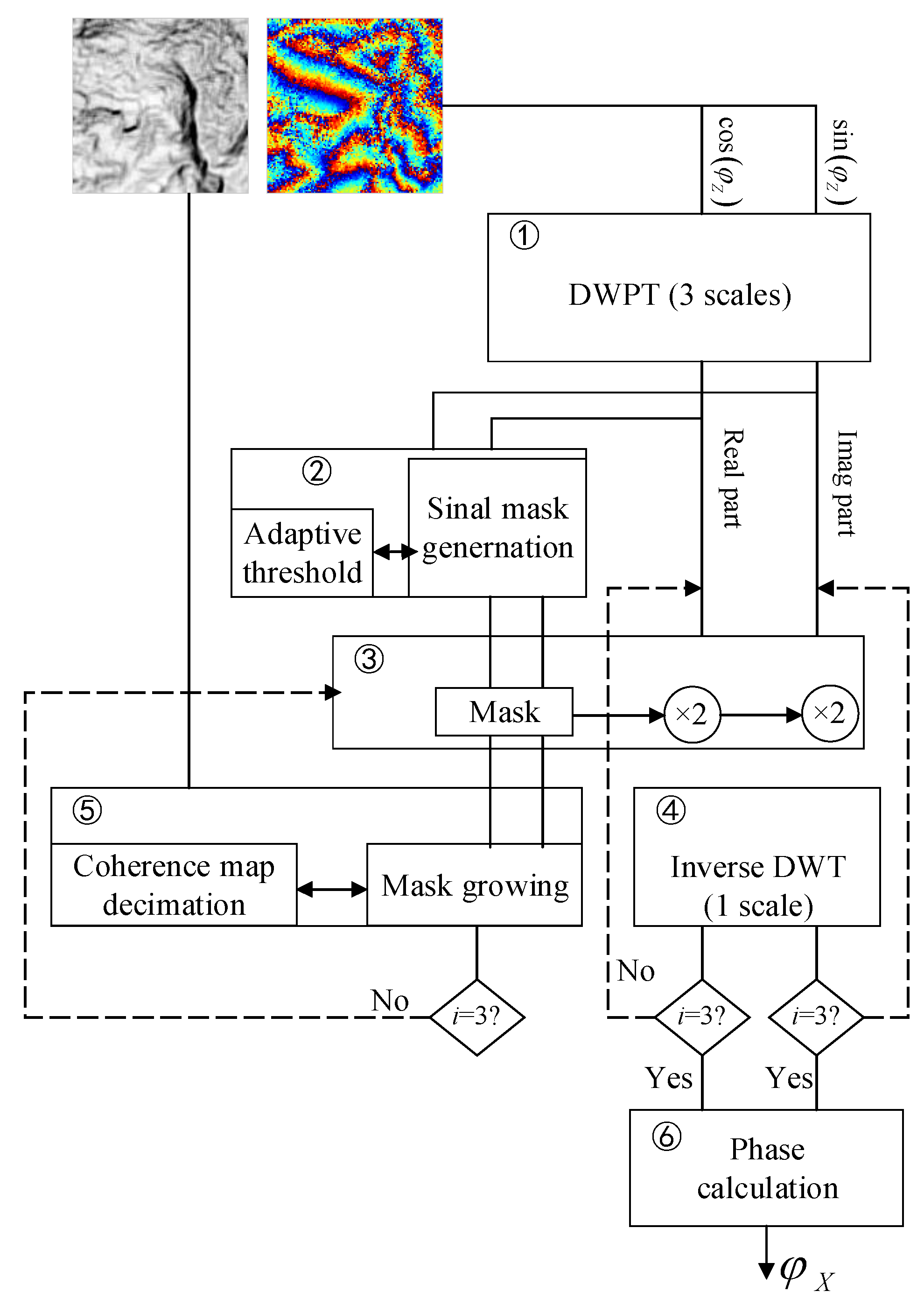
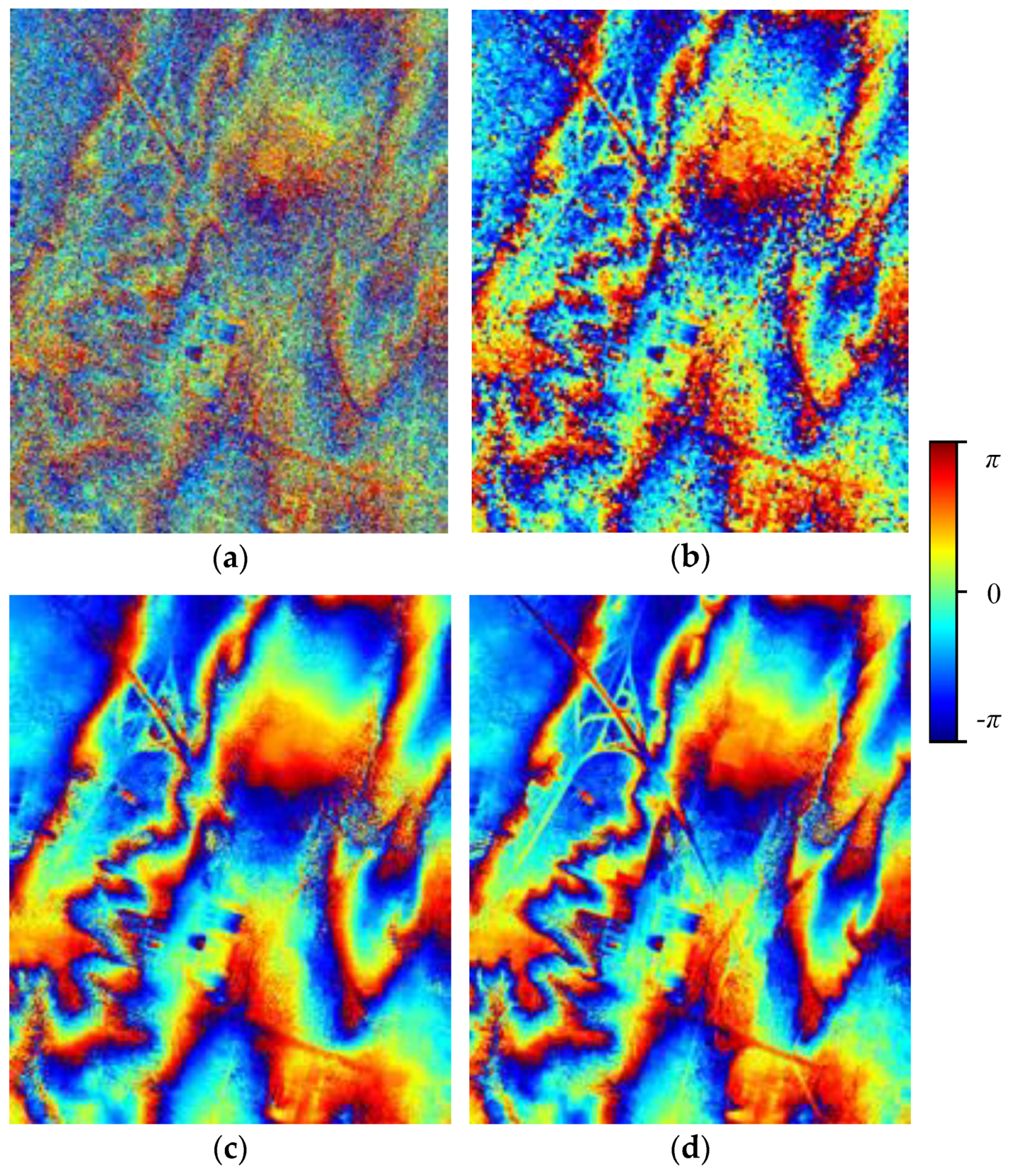


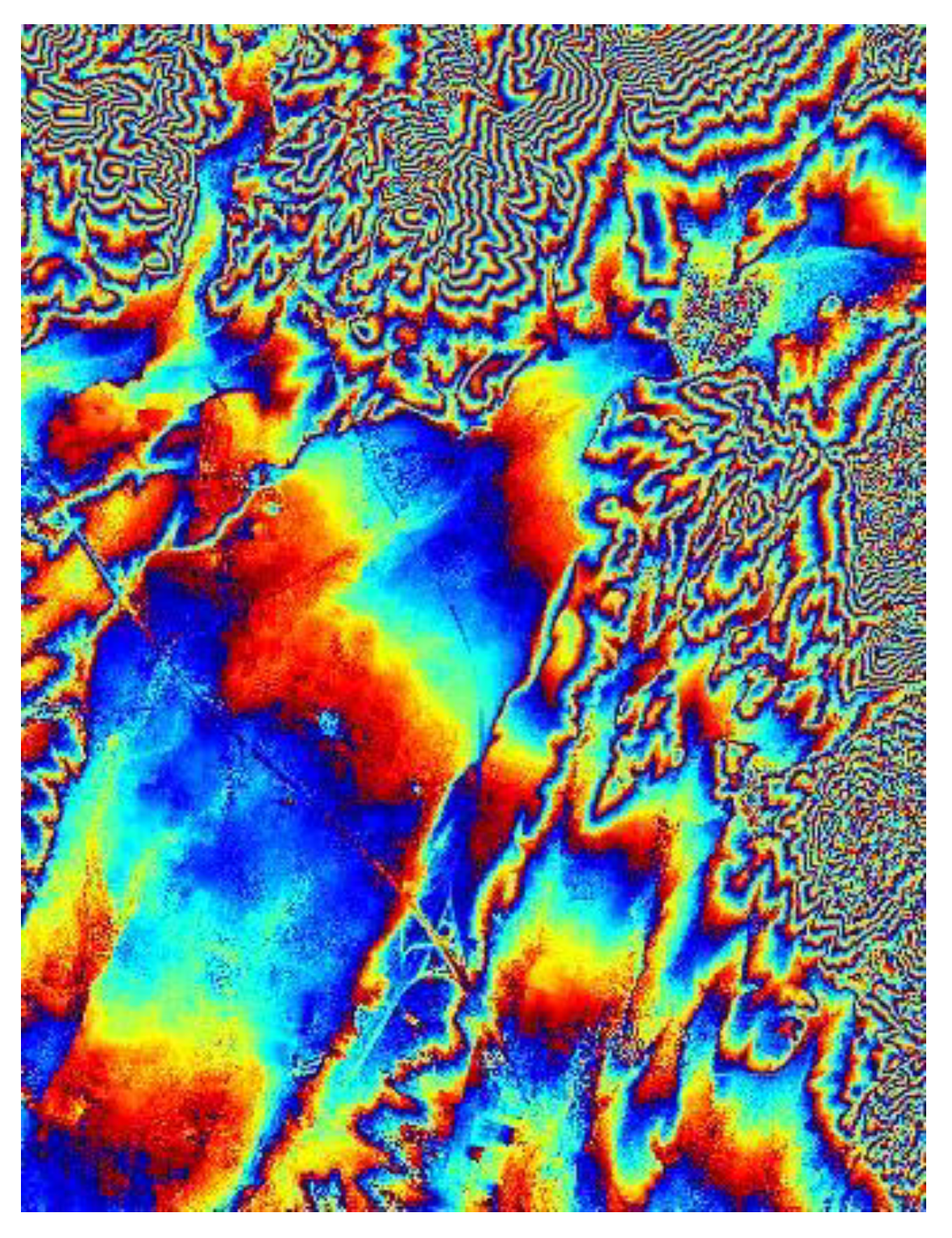
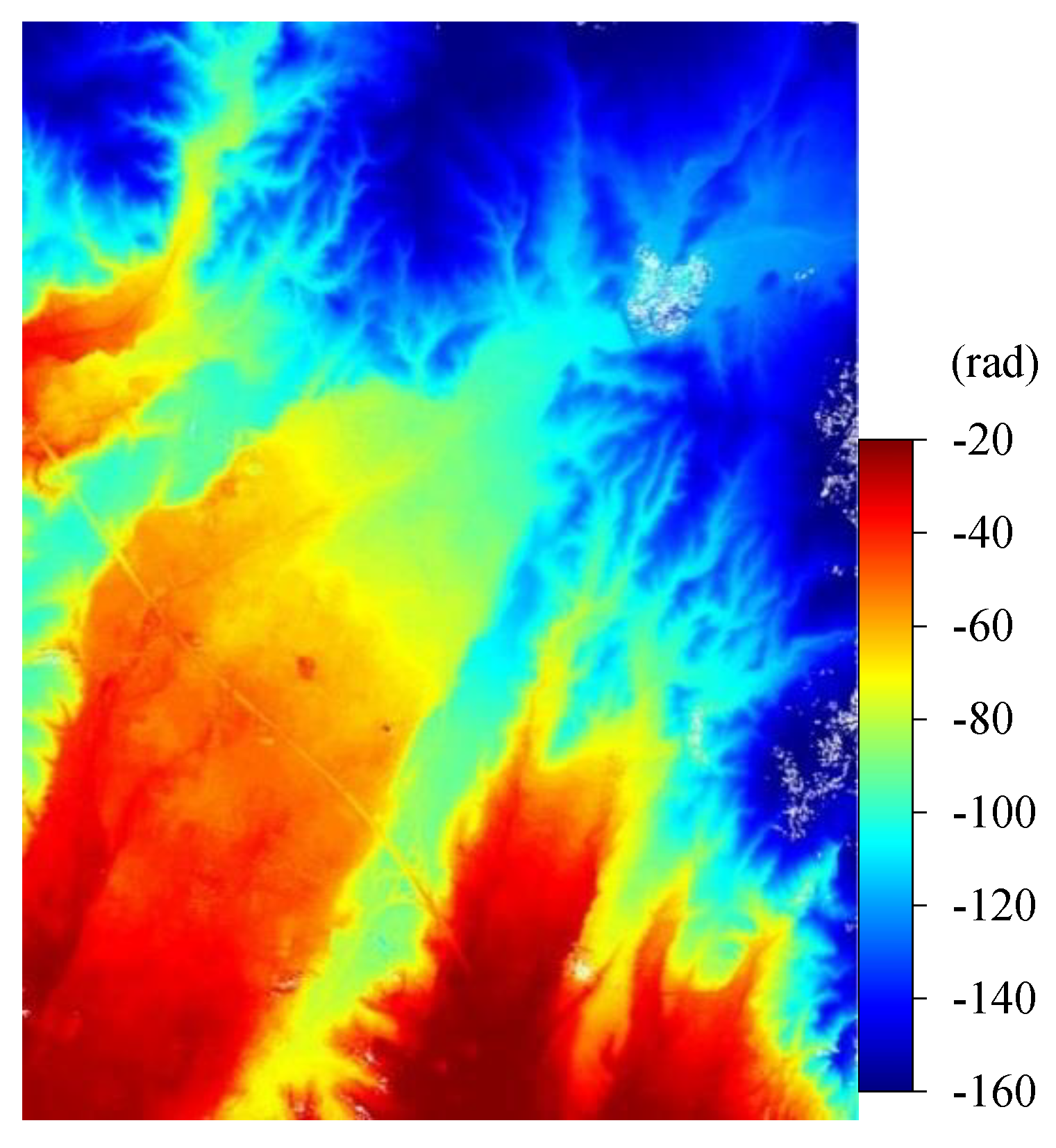
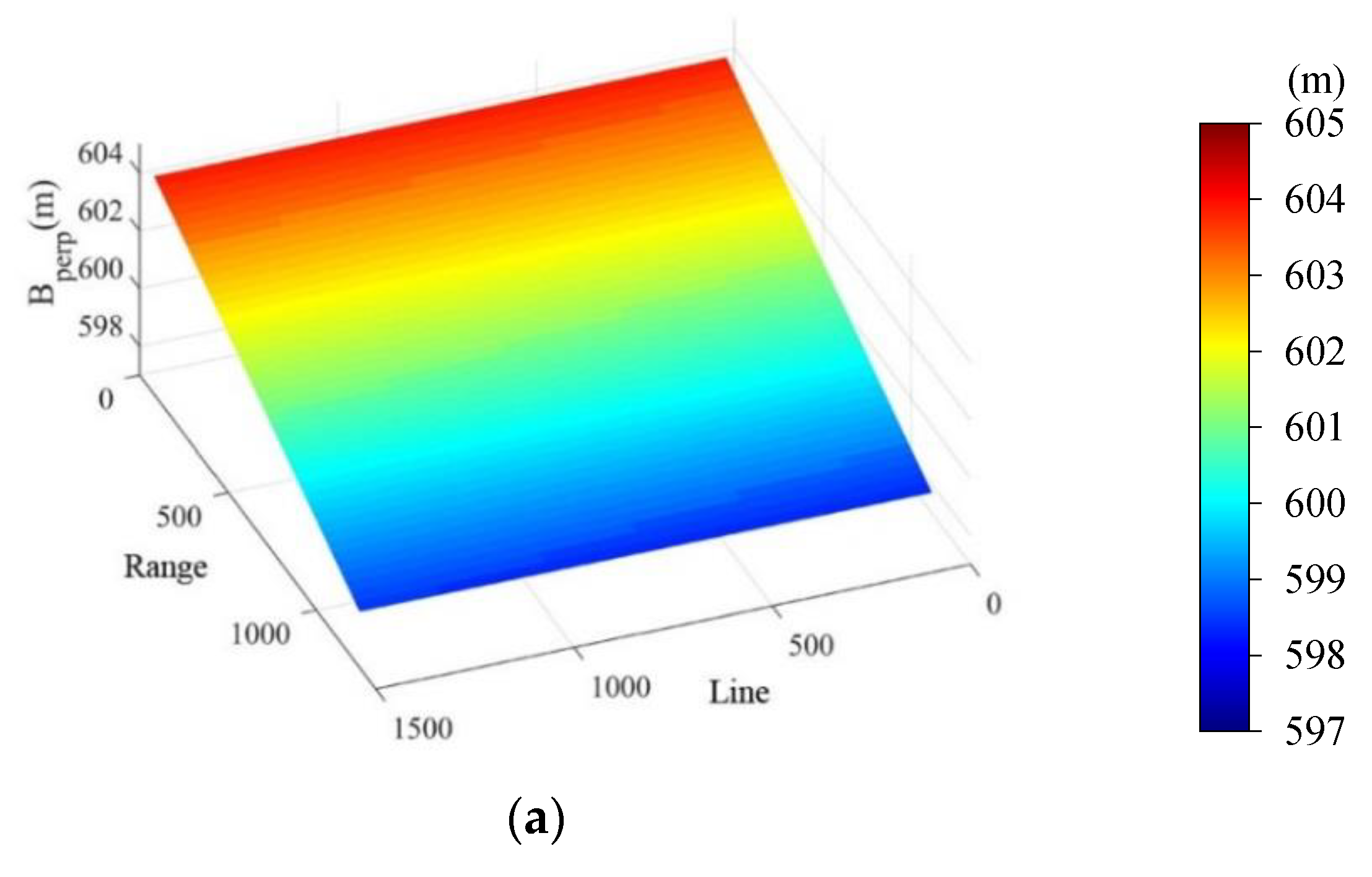
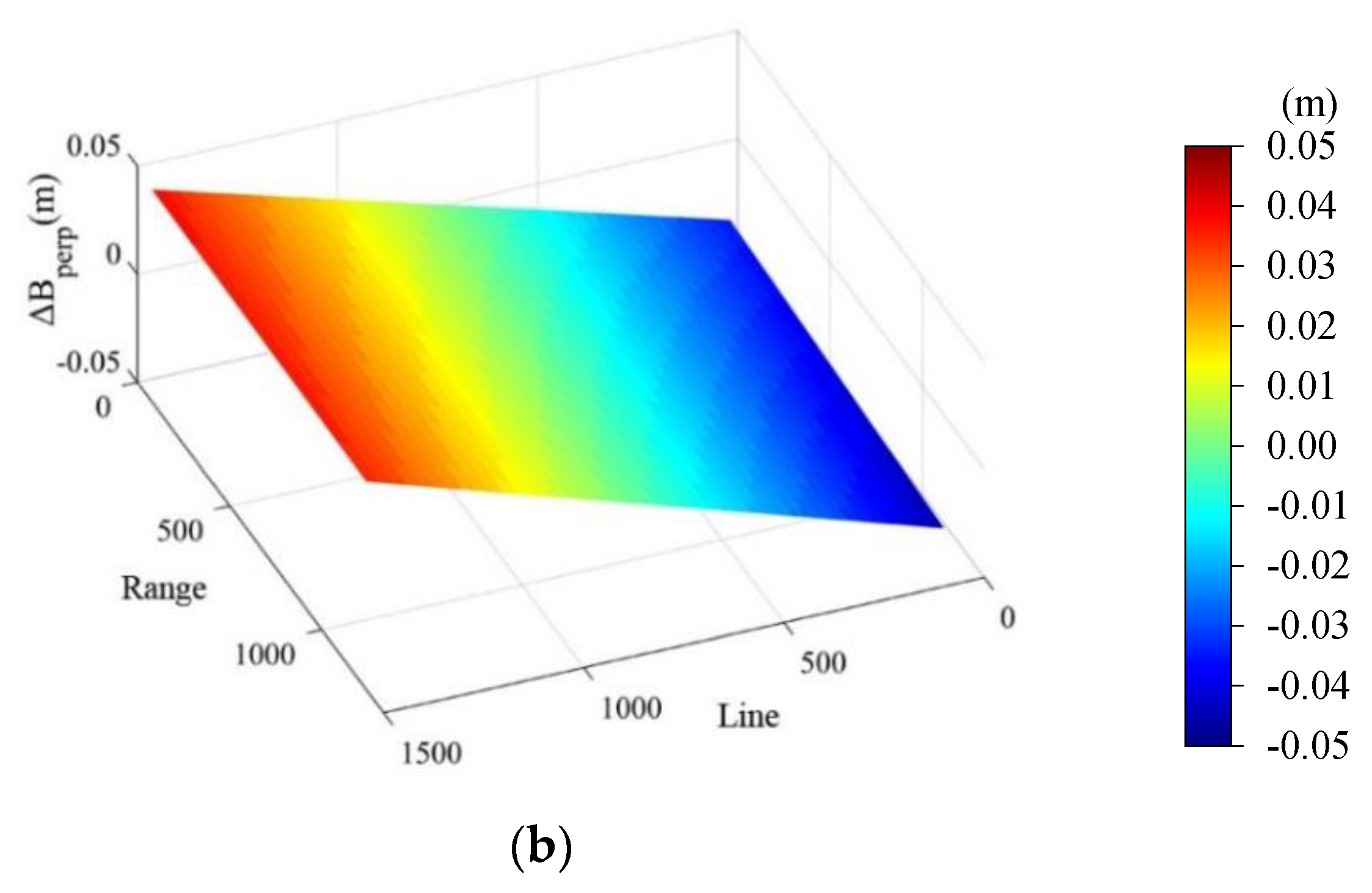
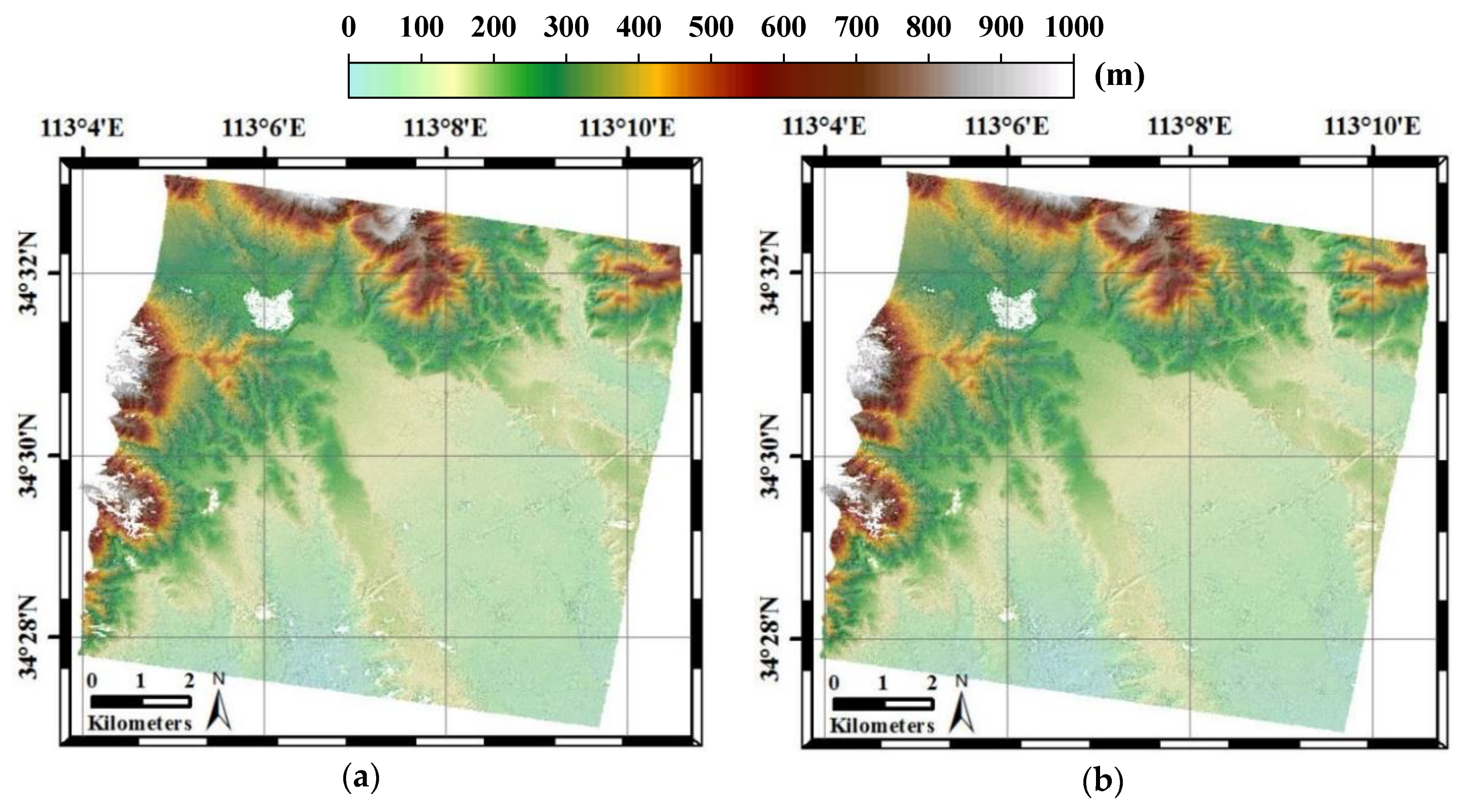
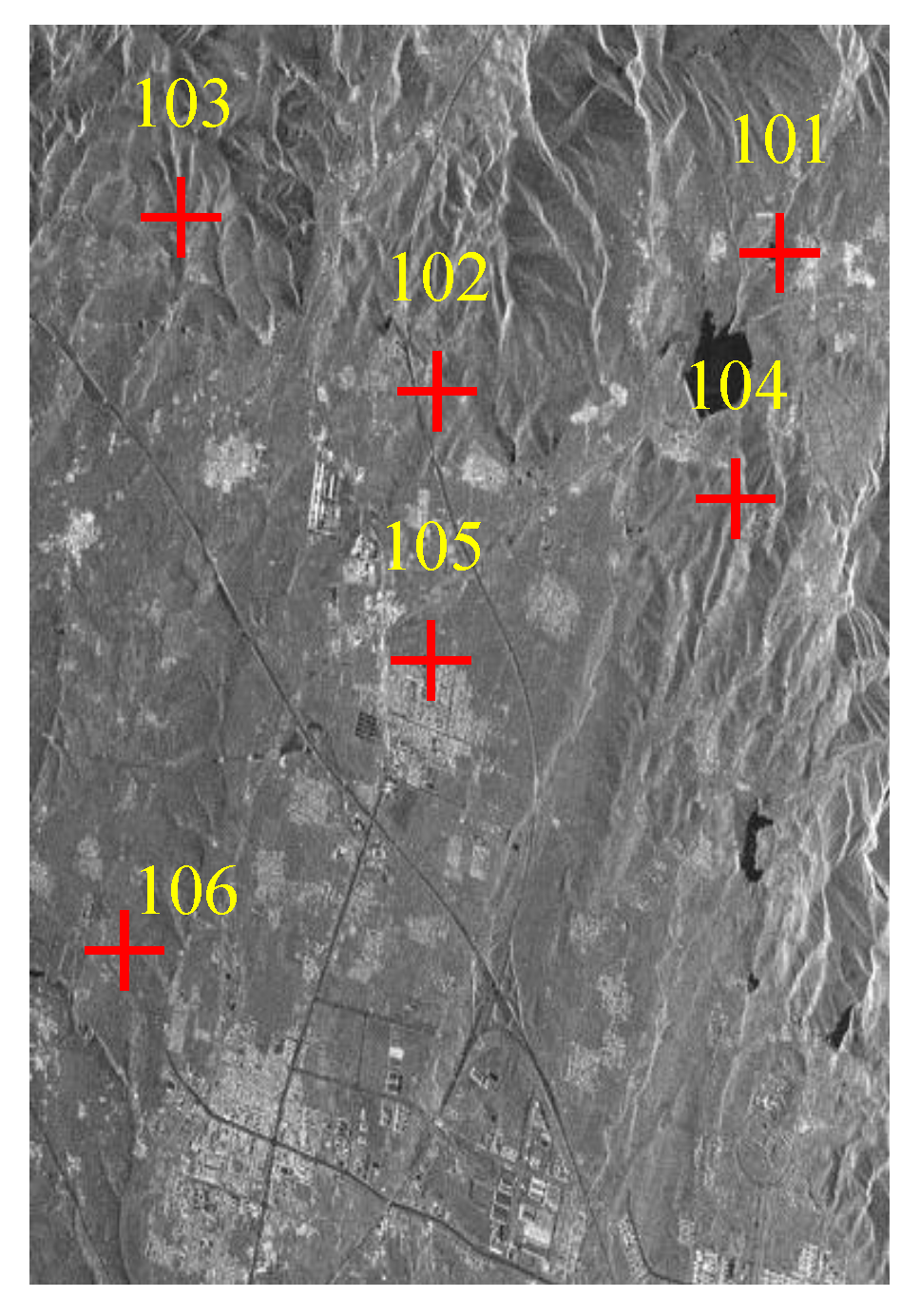

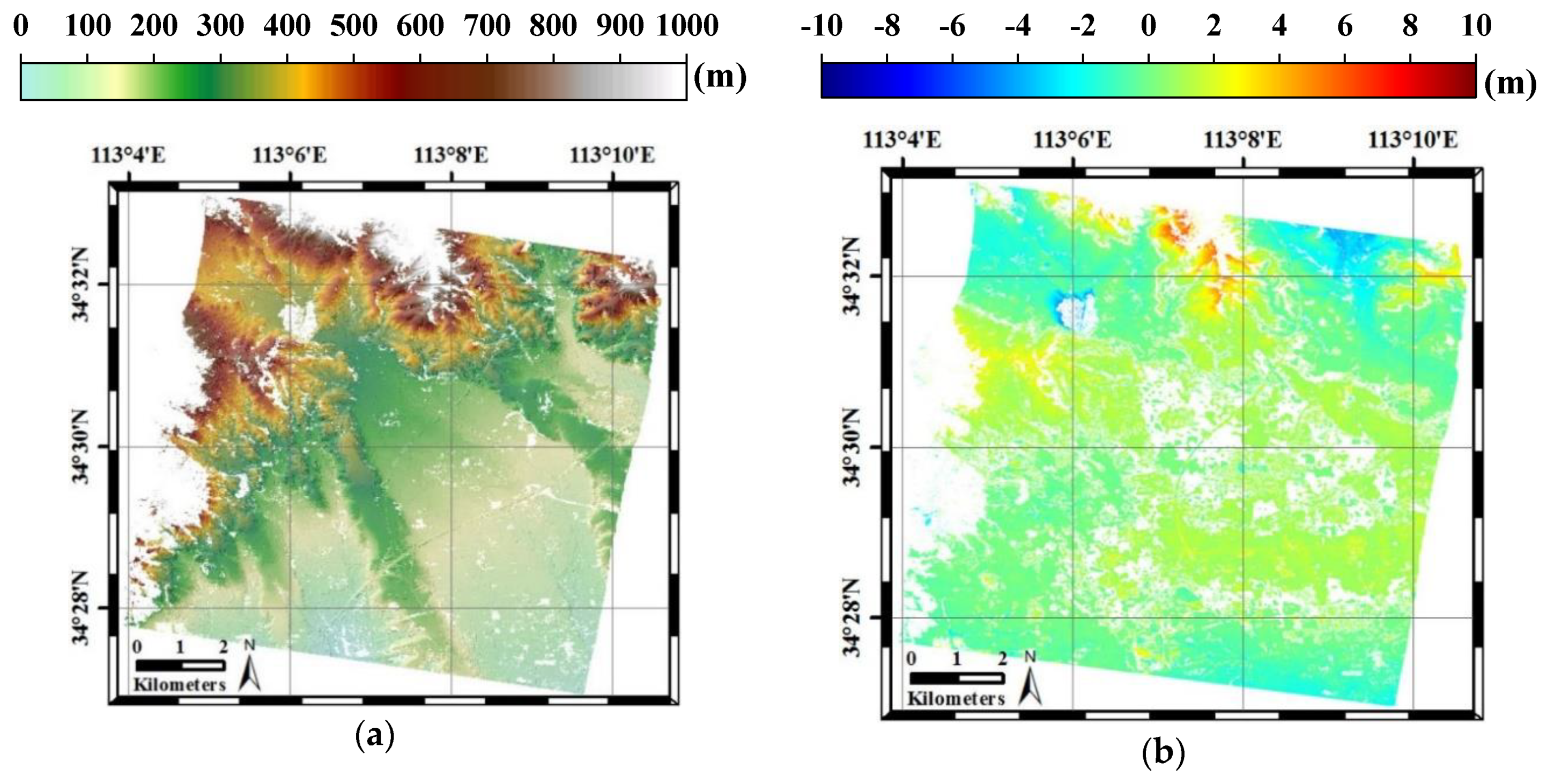
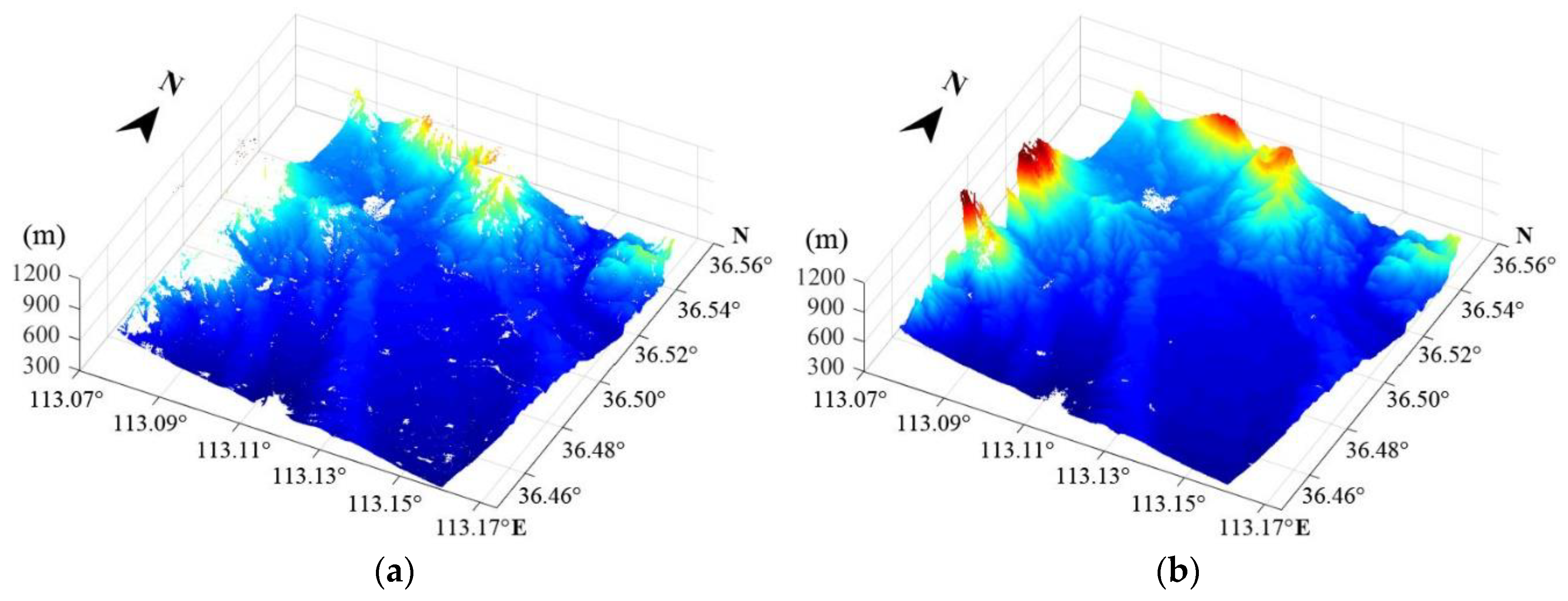
| Satellite | Resolution (m) | Launch Time | Country/Area | Orbit Altitude (km) | Band | Revisit Time (day) |
|---|---|---|---|---|---|---|
| ERS-1/2 | 30 × 30 | July 1991/April 1995 | Europe | 785/824 | C | 35 |
| JERS-1 | 18 × 18 | February 1992 | Japan | 568 | L | 44 |
| Radarsat-1 | 9–100 | November 1995 | Canada | 798 | C | 24 |
| Envisat-1 | 10–1000 | March 2002 | Europe | 768 | C | 35 |
| ALOS-1 | 10–100 | January 2006 | Japana | 692 | L | 46 |
| TerraSAR-X | 1–18.5 | June 2007 | Germany | 514 | X | 11 |
| COSMO-SkyMed | 1–100 | June 2007 December 2007 October 2008 November 2010 | Italy | 619 | X | 16 |
| Radarsat-2 | 3–100 | December 2007 | Canada | 798 | C | 24 |
| TanDEM-X | 1–16 | June 2010 | Germany | 514 | X | 11 |
| ALOS-2 | (1–60) × (3–100) | May 2014 | Japan | 628 | L | 14 |
| Sentinel-1A/1B | (5–20) × (5–40) | April 2014/April 2016 | Europe | 693 | C | 6 |
| Gaofen-3 | 1–500 | August 2016 | China | 755 | C | 29 |
| Imaging Mode | Incidence Angle (°) | Resolution (m) | Observation Width (km) | |
|---|---|---|---|---|
| Range | Azimuth | |||
| Spotlight | 20~50 | 1.0–1.5 | 0.9–2.5 | 10 × 10 |
| Ultrafine strip | 20~50 | 3 | 2.5–5 | 30 |
| Fine strip I | 19~50 | 5 | 4–6 | 50 |
| Fine strip II | 19~50 | 10 | 8–12 | 95–110 |
| Standard strip | 17~50 | 25 | 15–30 | 95–150 |
| Narrow scanning | 17~50 | 50~60 | 30–60 | 300 |
| Wide scanning | 17~50 | 100 | 50–110 | 500 |
| Global observation | 17~53 | 500 | 350–700 | 650 |
| Full polarization strip I | 20~41 | 8 | 6–9 | 20–35 |
| Full polarization strip II | 20~38 | 25 | 15~30 | 35–50 |
| Wave | 20~41 | 10 | 8~12 | 5 × 5 |
| Master Image | Slave Image | |
|---|---|---|
| Date | 29 November 2016 | 28 December 2016 |
| Mode | Fine strip I | |
| Resolution | 3 m | |
| Wave length | 5.56 cm (C band) | |
| Path direction | Descending | |
| No. | Elevation Value from GCPs (m) | Elevation Value from Gaofen-3 SAR Images (m) | Difference (m) |
|---|---|---|---|
| 101 | 470.257 | 468.563 | −1.694 |
| 102 | 425.266 | 423.952 | −1.314 |
| 103 | 406.783 | 413.267 | 6.484 |
| 104 | 482.970 | 485.012 | 2.042 |
| 105 | 364.747 | 368.449 | 3.702 |
| 106 | 372.336 | 378.83 | 6.494 |
| RMSE | 3.305 | ||
| Master Image | Slave Image | |
|---|---|---|
| Date | 20 December 2015 | 18 November 2016 |
| Mode | Strip | |
| Resolution | 1 m | |
| Wave length | 3.1 cm (X band) | |
| Path direction | Descending | |
© 2020 by the authors. Licensee MDPI, Basel, Switzerland. This article is an open access article distributed under the terms and conditions of the Creative Commons Attribution (CC BY) license (http://creativecommons.org/licenses/by/4.0/).
Share and Cite
Zheng, Y.; Chen, Z.; Zhang, G. Application and Evaluation of the Gaofen-3 Satellite on a Terrain Survey with InSAR Technology. Appl. Sci. 2020, 10, 806. https://doi.org/10.3390/app10030806
Zheng Y, Chen Z, Zhang G. Application and Evaluation of the Gaofen-3 Satellite on a Terrain Survey with InSAR Technology. Applied Sciences. 2020; 10(3):806. https://doi.org/10.3390/app10030806
Chicago/Turabian StyleZheng, Yuzhi, Zhenwei Chen, and Guo Zhang. 2020. "Application and Evaluation of the Gaofen-3 Satellite on a Terrain Survey with InSAR Technology" Applied Sciences 10, no. 3: 806. https://doi.org/10.3390/app10030806
APA StyleZheng, Y., Chen, Z., & Zhang, G. (2020). Application and Evaluation of the Gaofen-3 Satellite on a Terrain Survey with InSAR Technology. Applied Sciences, 10(3), 806. https://doi.org/10.3390/app10030806





